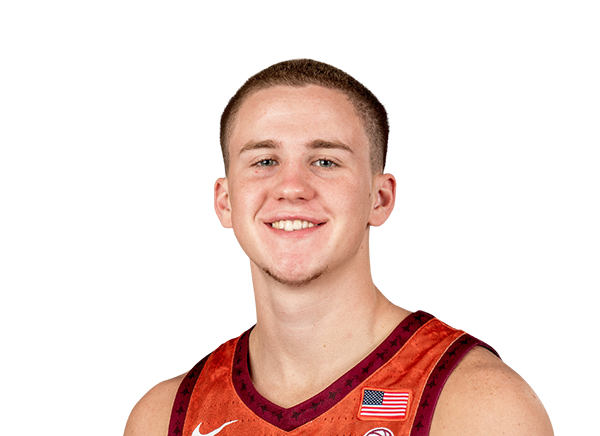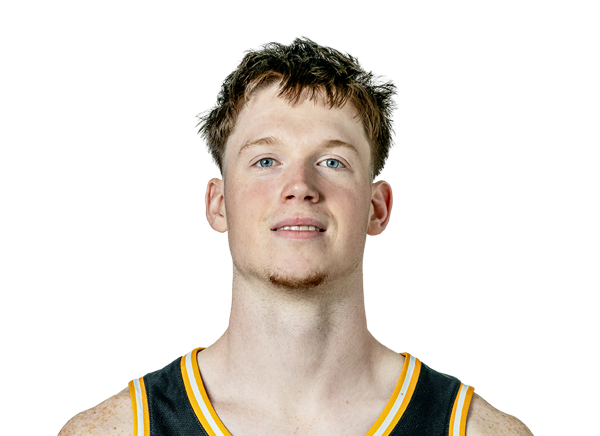Detailed Analysis
Offense
Rocco Zikarsky’s offensive profile is narrowly defined but cleanly executable, he knows what his role is and rarely strays outside of it. His impact is largely tied to simple sequences: finishing lobs, crashing the offensive glass, and rolling hard after setting a screen. He doesn’t space the floor, doesn’t isolate, and doesn’t create for others, but his motor is high and his willingness to do the dirty work shows up on tape. Zikarsky is one of the most active crashers in the NBL, posting an impressive 16.7% offensive rebound rate, and he consistently works to generate second-chance points, particularly via tip-ins and putbacks.
That said, his lack of polish as a scorer is glaring. He struggles to establish deep post position against stronger defenders and doesn’t compensate with advanced footwork or soft touch. His hook shots and one-dribble post counters are often rushed or off-balance, and he’s prone to awkward misses when help arrives. Even when he attempts more deliberate moves, such as a shoulder bump into a hook, he frequently fails to fully set his feet or generate lift, resulting in poor outcomes. These sequences are compounded by occasional bobbles and turnovers when crowded, which speaks to average hand strength and an unrefined feel in tight spaces.
Zikarsky’s screen setting also needs refinement. While he rolls hard and with intent, he’s been called multiple times for illegal screens, often pushing or leaning into defenders. These fouls appear both in his NBL tape and international play and point to a lack of lower body flexibility and timing. Still, his consistent rim-running and habit of staying active after contact, rather than spectating post-screen, makes him a viable low-usage big in structure. He’s an opportunistic scorer who thrives on "found money" plays but offers very little self-creation or floor spacing.
Defense
Zikarsky’s most bankable NBA skill is his rim protection, but even here, there are caveats. His size is real and imposing, where he’s a true 7’3” with long arms, and when stationed in drop coverage, he has flashed moments of clarity and impact. Early in games, he’s shown smart reads defending two-on-one pick-and-rolls, staying between the roller and ball-handler with poise. He understands verticality, doesn’t chase blocks unnecessarily, and generally positions himself well around the rim.
However, Zikarsky’s defensive success is heavily scheme-dependent. His lateral mobility is poor, and his perimeter defense is a clear liability. He plays too upright, doesn’t get low in his stance, and struggles to change direction when isolated; issues that lead to foul trouble and defensive breakdowns. On closeouts, he rarely contests effectively, and quicker guards can blow by him without much resistance.
Even within his ideal context as a drop big, his limitations show. He’s frequently late on putback contests and doesn’t always extend or elevate quickly enough to alter second-chance attempts. His timing around the rim can be reactive rather than anticipatory, and his high center of gravity and developing core strength make it difficult for him to recover position once displaced. Smaller players can box him out, and once sealed, he rarely reestablishes leverage, highlighting a physicality gap that will only widen at the NBA level.
Despite his listed weight, Zikarsky is not strong through his lower half, and this shows up on tape when he’s unable to finish box outs or loses contested boards to smaller wings. His defensive rebounding positioning is sound, but without strength or vertical explosion, he can’t always capitalize on it. The result is a prospect who has the frame and instincts to be a functional paint anchor, but lacks the tools, strength, lift, quickness, to consistently deliver on that promise right now.
Looking Ahead
Rocco Zikarsky is the kind of developmental bet who could pay off for a team willing to invest in patience and infrastructure. His outlier size, feel for drop coverage, and motor on the glass are attractive baseline traits. He’s clearly intelligent, plays within himself, and doesn’t chase plays that aren’t there. That alone makes him an appealing stash or long-term project, particularly for teams that lean into conservative pick-and-roll coverage and don’t require bigs to defend in space or initiate offense.
But there are major hurdles to clear before he becomes a consistent NBA contributor. His strength base is underdeveloped, and until he adds more core and lower body power, he’ll continue to get pushed off spots and outworked on second efforts. His offensive utility is narrowly defined, and any hope of expanding it, via free throw improvement, elbow touch, or reliable short-roll playmaking, remains speculative. He also hasn’t played significant minutes in a professional game in over a year, further complicating his evaluation and raising real questions about stamina, conditioning, and long-term role viability.
The player who dominated FIBA youth events is still in there somewhere, but this past year in Brisbane, he’s looked more like a low-minute role player than a future starter. If the motor stays high, the physical development comes along, and the touch around the basket sharpens, Zikarsky could find a niche as a Jakob Poeltl-type backup who anchors second units and eats glass. But unless his mobility and strength improve significantly, he’ll be at risk of getting played off the floor in higher-level NBA settings.
Right now, Zikarsky projects best as a draft-and-develop center whose value lies in vertical spacing, basic rim protection, and long-term upside. A team might take him in the late first or early second round banking on that outlier size and hoping the rest follows. If it doesn’t, he risks being a specialist who can’t stay on the court.
Analysis by ReverseEnigma


